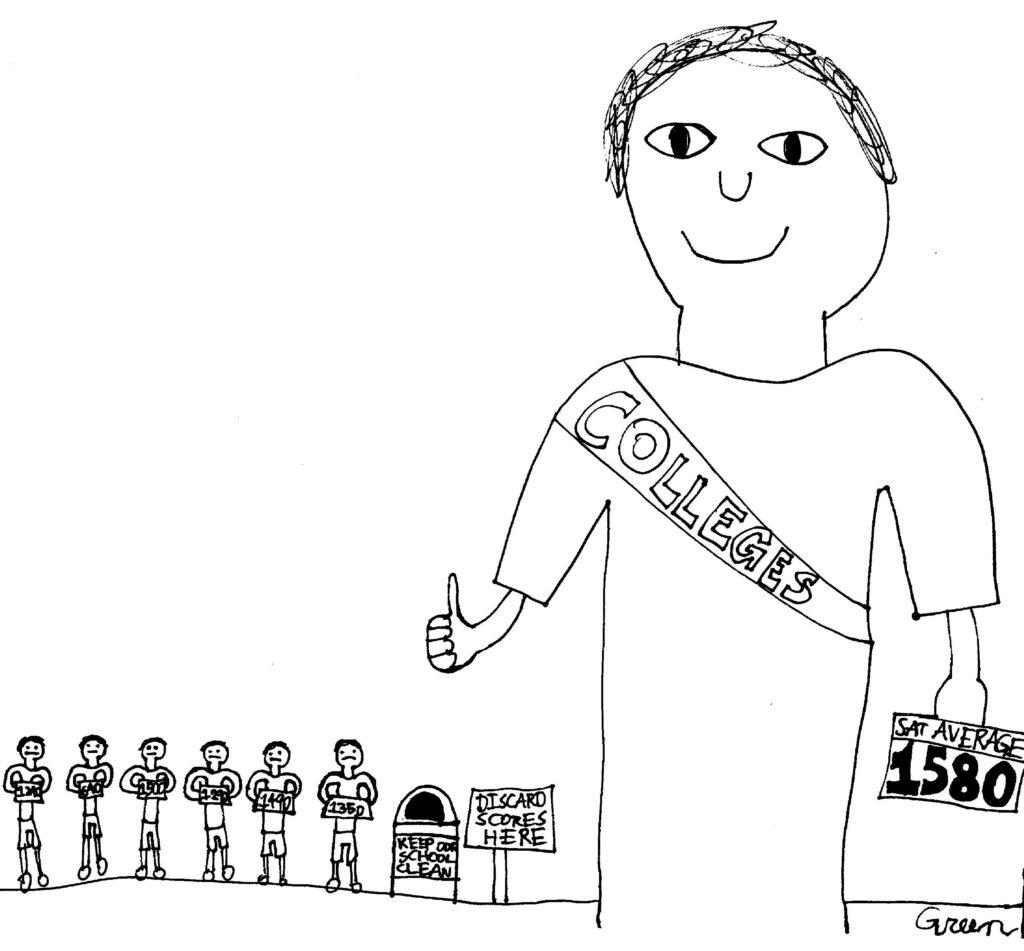Superscoring is a method of scoring SAT and ACT tests by taking the highest scores in each category (math and English for the SAT; and science, math, English and writing for the ACT) from multiple exams taken on different dates and creating a composite test. Tests containing the highest score from each section are sent to colleges that superscore, who then create the superscored test.
Many colleges claim that the students who best exemplify academic and personal virtues are the ones accepted to their school. However, superscoring, which dampens academic differentiation, is hypocritically widespread among many of these same colleges.
While superscoring seems advantageous to both students and colleges, it is actually an unfair system.
For example, a student receiving a 800 in math and 740 in English on one SAT, then a 750 in math and 790 in English on another could have a superscored result of 800 in math and 790 in English.
Superscoring only changes which scores a person sends, allowing students to make up for an unfortunate circumstance on a test day, from sleepiness to sickness. As a result of this test choice, superscoring is beneficial to students who take the test multiple times, since they are able to hide their lesser scores and try for higher scores with no drawback.
These supposed benefits come with a fatal flaw, however: By allowing students to hide both scores they dislike and the number of times they have taken the SATs or ACTs, colleges create score inflation and reduced differentiation among potential applicants.
By taking the tests several times, students can improve their scores because some of their tests will be easier than others. The possibility of at least one “good” score granted by chance also increases greatly with each additional test taken.
Score inflation from repeated test taking causes the scores of those who scored well initially to be skewed by the composite scores of those who superscored. The original purpose with which tests are sent to colleges — to determine academic aptitude — is thereby dampened.
Additionally, superscoring hurts the students who may not have the money or time to take the tests more than once. As each SAT test costs $60 with the essay and each ACT test costs $62.50 with the essay, students with financial difficulties will not only have fewer resources for studying, but will also have fewer chances to retake as well.
While this is not much of a problem due to College Board waiving fees for up to two SATs for low-income students and the fact that on average, students take the SAT two or three times, it still reduces the number of options available for low-income students.
Colleges also have a somewhat questionable incentive to superscore. Since superscoring allows their students to have an overall higher average SAT or ACT score, colleges can boast this difference over competitors and improve their rankings.
Why, then, is superscoring still practiced? The answer may lie in the fact that some consider the lack of academic differentiation among applicants a blessing in disguise, rationalizing that it is better to make it hard for others to stand out than it is to stand out themselves.
Or, it may simply be that most do not care about the issue because they do not plan on taking the SAT more than once or twice anyway — when applying to a range of colleges, it is unlikely that all of them superscore.
Either way, superscoring has few general positives, serving only colleges’ egos and undermining the original purpose of standardized testing.
Rather than superscoring, colleges should require applicants to submit all of their test scores. This allows for a more comprehensive analysis of scores. In so doing colleges can account for many factors including times taken, dates taken and whether the student shows a trend of improvement with each successive try. An analysis of such would surely be more thorough than only a single, composite test.


























